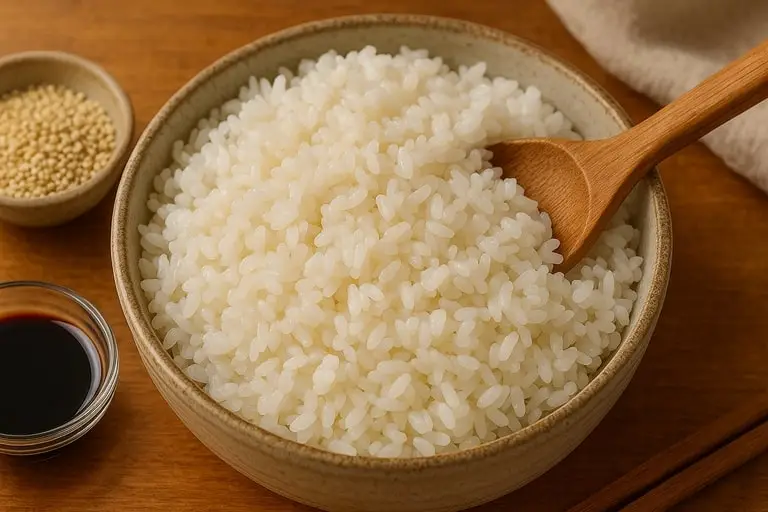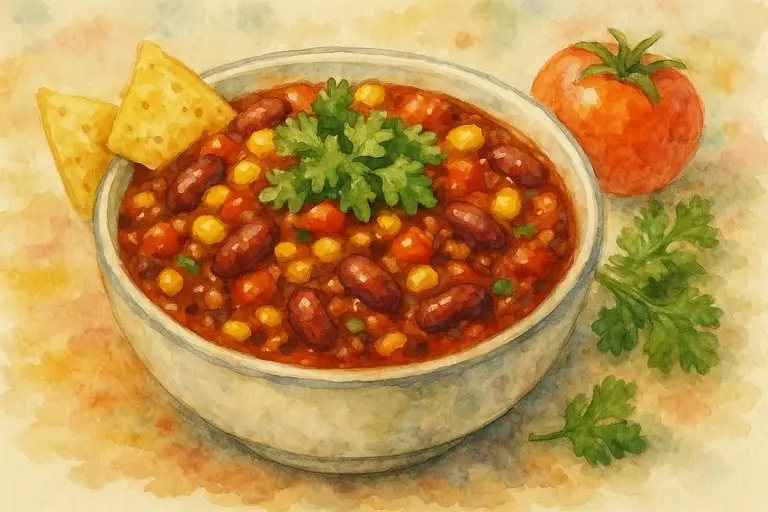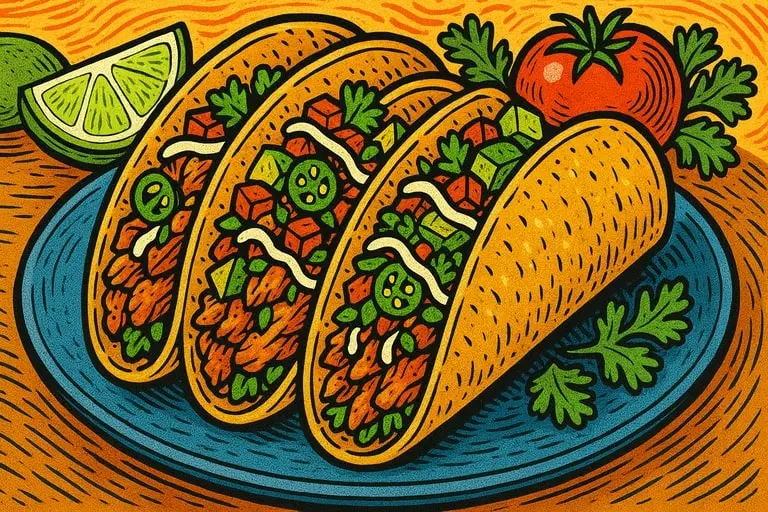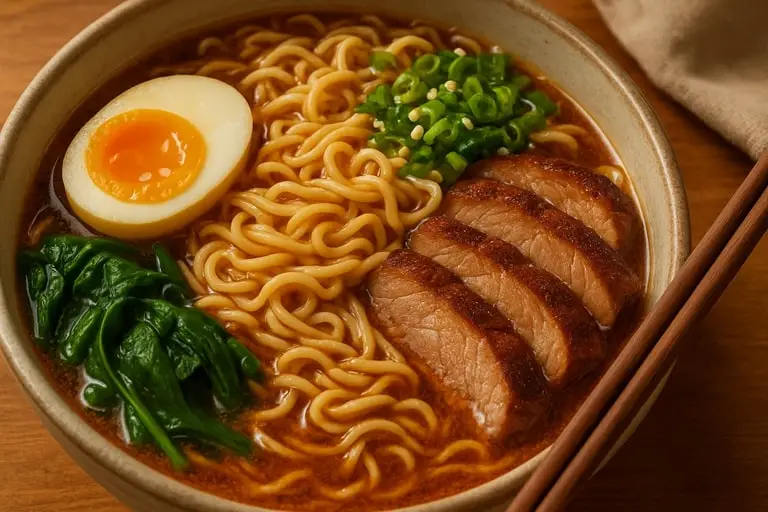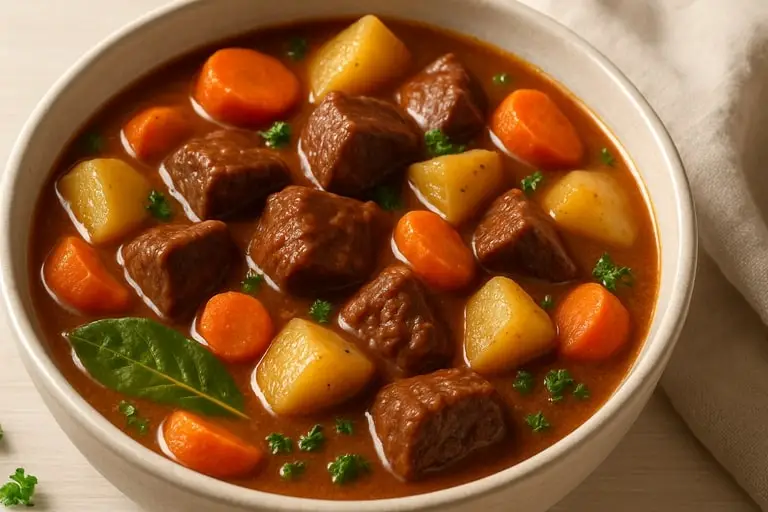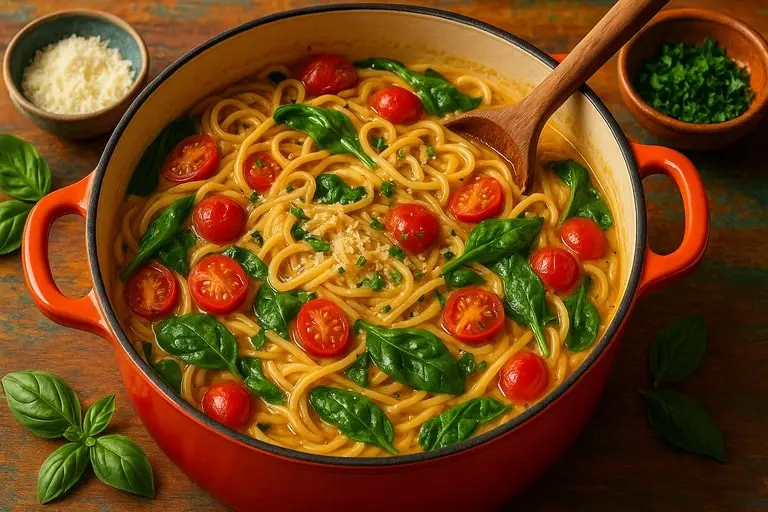The sushi rice recipe forms the foundation of one of Japan’s most celebrated culinary arts, shaping the flavor, texture, and character of sushi itself. While sushi often garners attention for its toppings—fish, vegetables, or other creative additions—its success ultimately depends on the rice. Perfect sushi rice is not simply cooked grains; it is seasoned, aerated, and carefully balanced to achieve tenderness, stickiness, and subtle acidity. Without this mastery, sushi falters. The recipe for sushi rice therefore represents more than cooking technique; it reflects centuries of tradition, discipline, and cultural philosophy.
The origins of sushi rice lie in the evolution of preservation. Early sushi, known as narezushi, relied on fermenting fish with rice to extend its shelf life. Over time, fermentation gave way to seasoning, where rice was flavored with vinegar, sugar, and salt to mimic the tang of fermentation while enhancing taste. This transition marked the birth of sushi as we know it today, with sushi rice becoming central to both flavor and presentation. The recipe’s roots thus illustrate how necessity evolves into artistry.
Texture defines sushi rice. Each grain must remain distinct yet adhere lightly to others, forming cohesive bites without collapsing into mush. Achieving this balance demands precise rinsing to remove excess starch, controlled soaking to hydrate grains, and accurate water ratios during cooking. The result is rice that shines, both visually and texturally, ready to cradle delicate toppings or stand alone in rolls. These qualities underscore why sushi chefs consider rice preparation the most critical skill in their craft.
Seasoning transforms cooked rice into sushi rice. A mixture of rice vinegar, sugar, and salt is warmed gently before being folded into hot rice, coating grains with a glossy sheen while imparting subtle balance. The proportions vary slightly by region or chef, but the goal remains constant: to highlight, not overshadow, the flavors of fish or vegetables. The seasoning creates harmony, where acidity lifts richness, sweetness rounds edges, and salt sharpens definition. This delicate calibration proves why sushi rice preparation is both art and science.
Culturally, sushi rice embodies respect for detail. In traditional Japanese kitchens, apprentices may spend years mastering rice before moving to fish preparation, illustrating its primacy. Rice is not viewed as background but as equal partner, carrying weight in every bite of sushi. This emphasis reflects broader Japanese culinary philosophy, where simplicity and balance elevate the ordinary into the extraordinary.
The sensory experience of sushi rice amplifies its significance. Its fragrance—mildly sweet and tangy from vinegar—signals freshness. Its glossy appearance attracts the eye, while its tender, slightly sticky texture pleases the palate. These sensory elements ensure that sushi rice is not merely functional but integral to the aesthetic and emotional experience of eating sushi.
From a nutritional perspective, sushi rice provides carbohydrates that fuel the body, while its seasoning contributes minimal calories but significant flavor. When paired with fish, vegetables, or seaweed, it becomes part of a balanced meal, reinforcing sushi’s reputation as both nourishing and satisfying. The rice’s simplicity ensures it adapts to dietary needs while retaining cultural authenticity.
Beyond Japan, sushi rice recipes have adapted globally. Western kitchens experiment with local vinegars, alternative sweeteners, or even colored rice infused with natural powders like beetroot or matcha for visual impact. While purists may critique such adaptations, they demonstrate the rice’s versatility and its role in bridging tradition with global creativity. Sushi rice thus becomes a medium for cultural exchange while preserving its essential identity.
Professional kitchens treat sushi rice as benchmark of skill. Chefs measure, rinse, and season with exacting precision, aware that diners judge sushi first by the quality of its rice. In competitions and Michelin-starred establishments alike, rice preparation often determines reputations, proving that even the simplest-seeming recipes hold the greatest weight.
Ultimately, the sushi rice recipe symbolizes discipline, respect, and artistry. It transforms a staple grain into a vessel of balance and expression, supporting sushi’s global legacy. By mastering rice, chefs honor tradition while ensuring innovation thrives upon a foundation of perfection.
Sushi Rice and Recipe Mastery
Mastering sushi rice requires attention to every step of the recipe, from selecting the right grain to the final folding of seasoning. Each stage influences the outcome, and even minor errors disrupt the delicate balance required. Mastery therefore reflects both technical skill and philosophical patience, where respect for process equals respect for result.
Grain selection is the first essential element. Short-grain Japanese rice, known for its high starch content, provides the stickiness required for sushi. Medium- or long-grain rice lacks the same cohesion, producing unsatisfactory texture. Within Japan, varieties like koshihikari are prized for sweetness, sheen, and consistency. Choosing the correct grain affirms commitment to authenticity and ensures foundation for success.
Rinsing represents the next critical step. Raw rice contains excess surface starch that, if left, produces gummy texture. Repeated rinsing under cold water until runoff clears ensures that grains cook cleanly. This ritual also symbolizes mindfulness, emphasizing preparation as integral to outcome. Soaking follows, hydrating grains evenly for uniform cooking, preventing undercooked centers or mushy exteriors.
Cooking itself demands precision. Traditionally, clay pots or wooden tubs were used, though modern rice cookers offer consistency. The water-to-rice ratio must be exact, typically slightly less than one-to-one by volume due to soaking. Steam cooking seals in moisture, producing glossy grains that retain structure. Attention to timing ensures even doneness, where each grain supports others without clumping excessively.
Seasoning marks the defining transformation into sushi rice. Vinegar, sugar, and salt are dissolved gently and poured over hot rice, then folded in with wooden paddles. Folding, not stirring, preserves grain integrity while distributing seasoning evenly. Fanning rice simultaneously cools it, enhancing sheen and locking in texture. This stage reveals artistry, where gestures, angles, and patience matter as much as ingredients.
Balance in seasoning defines mastery. Too much vinegar overwhelms toppings, while too little dulls flavor. Sugar tempers acidity, while salt sharpens contrast. Adjustments reflect personal style or regional custom but must remain subtle, for sushi rice is intended to enhance, never dominate. Such balance illustrates the philosophy of harmony central to Japanese cuisine.
Modern interpretations of sushi rice recipes expand possibilities. Some chefs infuse seasoning with kombu for umami depth, while others experiment with citrus zest or alternative sweeteners. Plant-based diets inspire versions using reduced sugar or natural syrups. Yet mastery ensures innovations never overshadow tradition, respecting the role of rice as vessel for balance.
Professional mastery involves scale and consistency. Restaurants prepare large quantities daily, demanding precision under pressure. Maintaining identical quality across dozens of portions demonstrates skill, while adapting to seasonal variations in rice or vinegar illustrates flexibility. Such mastery earns trust from diners, who expect perfection in every bite.
Sushi rice recipes also serve educational roles. Students in culinary schools learn how process shapes outcome, using rice as medium for lessons in discipline, timing, and respect for ingredients. Through this lens, sushi rice transcends recipe, becoming metaphor for broader culinary principles.
Home cooks benefit from recipe mastery by simplifying process without losing quality. Clear instructions on rinsing, soaking, and seasoning allow households to recreate sushi experiences at home, fostering appreciation for tradition while encouraging creativity with fillings or toppings. This accessibility underscores sushi rice’s universality, bridging professional rigor with domestic enjoyment.
Ultimately, mastery of sushi rice recipes requires humility and precision. It demands attention to grain, water, seasoning, and process, affirming that perfection arises from detail. Through practice, cooks transform rice into more than food—they transform it into expression of culture, discipline, and artistry.
Sushi Rice Recipe and Cultural Connection
The sushi rice recipe resonates most profoundly as a symbol of cultural connection, linking individuals not only to Japanese culinary heritage but also to universal values of care, ritual, and community. Its preparation and sharing highlight how food embodies identity, sustains tradition, and fosters bonds across time and place.
In Japan, sushi rice preparation is treated with reverence, often passed through generations of chefs as sacred knowledge. Apprenticeships emphasize repetition, where years may be spent perfecting rice before advancing to other skills. This dedication illustrates cultural values of discipline, respect, and patience, embedding meaning into every grain. Sushi rice thus becomes not merely ingredient but embodiment of cultural philosophy.
Family traditions also integrate sushi rice. In households, rice prepared for sushi brings relatives together, whether rolled into maki, pressed into nigiri, or shaped into temaki. The process of rinsing, seasoning, and shaping becomes collective, where generations share knowledge and reinforce identity through food. These rituals ensure continuity, linking past with present.
Globally, sushi rice symbolizes cultural exchange. Its recipe, while rooted in Japanese tradition, adapts readily to international contexts. In the West, it forms bases for fusion rolls with unconventional fillings, while in other Asian countries, local ingredients blend seamlessly with sushi rice. This adaptability reflects food’s ability to transcend borders, creating shared experiences that honor origins while embracing innovation.
The act of eating sushi rice also embodies ritual. In fine dining, each bite is savored mindfully, respecting the chef’s work. At home, casual rolls reflect creativity and connection. Across contexts, the rice sustains a shared moment, where individuals bond over flavor, texture, and tradition. This universality demonstrates how sushi rice bridges cultural differences through common appreciation of balance and care.
Psychologically, sushi rice carries symbolic weight. Its glossy grains, tender yet cohesive, embody harmony and balance, reinforcing values not only culinary but philosophical. Preparing and consuming sushi rice fosters mindfulness, inviting individuals to slow down and appreciate detail. In this way, it becomes more than nourishment—it becomes meditation.
Modern lifestyles adapt sushi rice traditions to contemporary demands. Pre-seasoned vinegars simplify preparation, while rice cookers automate cooking. Yet even with such shortcuts, the ritual of seasoning and folding preserves cultural connection, reminding households of authenticity amid convenience. The persistence of these practices proves that cultural essence endures despite modernization.
Cultural festivals often feature sushi rice as centerpiece. From matsuri celebrations in Japan to international sushi festivals, rice underscores identity and pride. These gatherings reinforce collective memory, situating sushi rice as both culinary delight and cultural marker. Its presence confirms belonging while celebrating diversity.
Even in professional contexts abroad, sushi rice preparation affirms respect for Japanese culture. Chefs trained internationally adhere to traditions, acknowledging rice as cornerstone of sushi’s identity. Diners, too, increasingly recognize that evaluating sushi begins with evaluating its rice, fostering appreciation for authenticity across borders.
The symbolic resonance of sushi rice also extends into broader conversations about globalization. Its ability to adapt while retaining identity reflects values of coexistence, where diversity strengthens rather than erodes tradition. Sushi rice thus becomes metaphor for cultural connection in an interconnected world.
Ultimately, the sushi rice recipe embodies cultural connection by uniting heritage, ritual, and innovation. It links individuals to history, binds families in tradition, and bridges global communities through shared appreciation. In every seasoned grain lies testimony to patience, respect, and harmony, ensuring sushi rice’s enduring place in both culture and cuisine.
Sticky rice occupies a distinctive place in the culinary traditions of Asia and beyond, a grain that is not only a staple food but also a cultural symbol, an ingredient used in celebrations, rituals, and daily meals alike. Unlike ordinary rice varieties that separate into fluffy grains after cooking, sticky rice clings together, creating a texture that is soft, cohesive, and uniquely satisfying.
This physical quality shapes the way it is eaten, handled, and paired with other foods, giving rise to customs and practices that span centuries. It is more than just sustenance; it is an expression of identity and tradition, woven into the lives of countless communities who regard it as central to their cuisine and culture.
The origins of sticky rice cultivation can be traced to ancient Southeast Asia, where the humid climate and fertile soils proved ideal for growing glutinous rice varieties. Over time, the crop became essential to local diets and a key feature of agricultural cycles.
Archaeological evidence reveals that it has been cultivated for thousands of years, sustaining populations and influencing culinary habits. Farmers developed sophisticated methods of planting, harvesting, and processing, ensuring that sticky rice remained abundant and reliable. These practices were passed down through generations, intertwining the grain with spiritual and social life, where it often symbolized fertility, prosperity, and continuity.
One of the most fascinating aspects of sticky rice is its role in communal eating. Because it clumps naturally, it can be shaped by hand, making utensils unnecessary in many traditions. Diners roll small portions into bite-sized balls, dipping them into sauces or pairing them with meats, vegetables, or fish. This tactile interaction with food fosters a sense of intimacy and connection at the table, reinforcing bonds among family and friends. Meals built around sticky rice become more than opportunities for nourishment; they are occasions of togetherness, where eating is as much about interaction as it is about taste.
Culinary uses for sticky rice are remarkably diverse, extending far beyond the savory. It forms the backbone of numerous sweet preparations, where its naturally chewy texture provides a pleasing contrast to creamy coconut milk, ripe mangoes, or delicate syrups. In other contexts, it is steamed, wrapped in banana leaves with savory fillings, or incorporated into dumplings that appear at festivals and ceremonies. Its adaptability ensures that it moves seamlessly between everyday meals and celebratory feasts, embodying both comfort and festivity. In this way, sticky rice transcends categories, simultaneously humble and special, ordinary and extraordinary.
Cooking sticky rice requires techniques distinct from those used with other rice varieties. Rather than boiling directly in water, it is often soaked and then steamed, a method that preserves its texture and prevents it from becoming mushy. This process highlights the importance of patience and attentiveness, as the soaking allows grains to hydrate evenly while steaming maintains their integrity.
The ritual of preparation reflects broader cultural values of care and respect for food, where even the most basic ingredient is treated with reverence. For many, learning to prepare sticky rice correctly is a rite of passage, an initiation into culinary traditions that connect them with ancestors.
The sensory qualities of sticky rice contribute to its enduring appeal. Its glossy sheen, tender chew, and mild sweetness make it versatile and appealing to all ages. When paired with bold flavors — spicy sauces, grilled meats, fermented fish — it acts as a balancing element, grounding intense tastes with its subtle neutrality.
When paired with fruits or sweeteners, its texture provides contrast, enhancing both mouthfeel and flavor. This dual role as both canvas and complement elevates sticky rice to a status few other grains achieve, enabling it to adapt to countless culinary scenarios while always maintaining its identity.
Culturally, sticky rice often holds ceremonial importance. In many Southeast Asian societies, it appears in offerings to deities, in wedding feasts symbolizing unity, and in harvest festivals expressing gratitude for abundance.
Wrapped in leaves, tied with string, or molded into symbolic shapes, it becomes not just food but a representation of beliefs and values. These rituals underline its role as a cultural anchor, a food that sustains not only the body but also the spirit of a community. Its presence at important events reinforces continuity, linking the present with the past and ensuring that traditions endure.
Economically, sticky rice has long been a foundation of agricultural life. Its cultivation supports farmers, influences land use, and shapes local economies. In some regions, sticky rice even functions as a measure of wealth and stability, its availability reflecting the success of harvests and the health of communities.
Markets brim with varieties and preparations, from freshly steamed rice to intricate sweets, showcasing how this grain drives both subsistence and commerce. In modern times, sticky rice has also become an export commodity, spreading its influence far beyond its original homelands and reaching global audiences eager to explore its flavors and textures.
Modern food culture has embraced sticky rice in new ways, bringing it into fusion dishes and contemporary gastronomy. Chefs experiment with it as a base for innovative desserts, reinterpret it in gourmet contexts, and highlight it in global restaurants that showcase authentic regional cuisines.
This expansion introduces sticky rice to audiences who may never have encountered it in traditional settings, broadening appreciation while also sparking renewed pride in its origins. Its adaptability proves once again that foods rooted in heritage can evolve while preserving their essence, finding new relevance in changing culinary landscapes.
The nutritional profile of sticky rice also plays a role in its appeal. While it is energy-dense, providing sustenance for laborers and families alike, it also offers a sense of satiety that aligns with the demands of physically intensive lifestyles. In traditional societies, its ability to provide long-lasting energy made it indispensable, while in contemporary diets it remains appreciated for its comfort and heartiness.
When combined with other nutrient-rich foods, it contributes to balanced meals that are both satisfying and culturally meaningful. Its role in health may not be identical across contexts, but its value as a dependable source of sustenance is universal.
Psychologically, sticky rice carries emotional resonance for those who grew up with it. Its texture and aroma instantly evoke memories of childhood, family meals, or festive gatherings. For people far from home, preparing or eating sticky rice can provide a profound sense of comfort and connection to their heritage. This emotional aspect ensures that sticky rice is more than a food — it is a memory carrier, a bridge between past and present, home and diaspora. Its enduring ability to evoke belonging makes it irreplaceable in the lives of those who cherish it.
Ultimately, sticky rice endures not only because it is delicious but also because it embodies values that transcend flavor. It represents patience in its preparation, generosity in its communal sharing, identity in its cultural symbolism, and adaptability in its countless uses.
It is as much a social bond as it is a staple grain, as capable of grounding everyday meals as it is of elevating ceremonies. Its persistence across centuries demonstrates that some foods hold a significance far greater than nutrition alone. Sticky rice, with its glossy grains and tender chew, remains a testament to the power of tradition, the creativity of cooking, and the universal human need for both sustenance and meaning.

